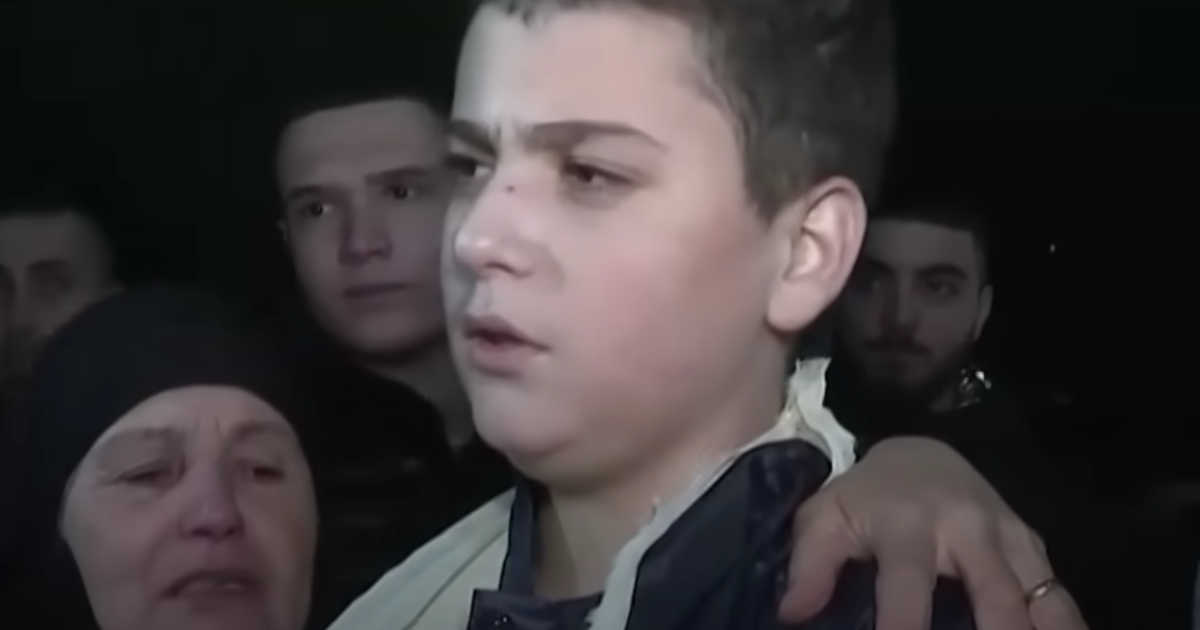Israeli officials were displeased when Mohammed Nazal, an 18-year-old Palestinian, described his ordeal in Israeli prisons after being released as part of a truce agreement with Hamas last week.
The teenager from the town of Qabatiya in the occupied West Bank told Arab and Western media how he was beaten and denied medical assistance, but this was refuted by Israeli authorities who tried to paint him as a liar.
His testimonies and medical records have now been verified by a fact-checking agency, providing further evidence of the brutal mistreatment Palestinians suffer in Israeli prisons that has only exacerbated since the Israel-Hamas war began on October 7.
What is Nazal saying?
Arrested in August and held without charge, Nazal was among more than 100 Palestinians kept in Israeli prisons – many arbitrarily – and released as part of a weeklong truce that ended on Friday.
After his release, he was interviewed by various news outlets, including Al Jazeera, to discuss his time in Israeli prison. He said prison guards grew significantly more violent after the war started.
“He kept beating me for eight minutes with a stick and without caring where it lands,” he told Al Jazeera of how an Israeli guard tortured him.
“I was covering my head. The stick was aimed here, at my head, but my hands would receive the blow.”
Images of Nazal with both hands held up by bandages – and his account of the ordeal – went viral. He said both hands suffered fractures and several fingers on both hands were broken. He may need surgeries on his road to recovery.
Nazal said he was “in pain on the floor for a week” in prison after the beatings, but was offered no medical assistance before his release was secured in a hostage exchange.
What is Israel saying?
Nazal was only able to talk about his experiences after he was united with his family by the Red Cross.
But after his account got out, Israeli officials sprang to action.
Ofir Gendelman, a media official in Prime Minister Benjamin Netanyahu’s office, released a video that showed Nazal did not have his hands bandaged when boarding a Red Cross bus.
That, he said, meant that his hands “were fine”. And he claimed this shows how Palestinians lie about what happens in Israeli prisons.
This is while Israel’s propaganda tactics and unfounded claims have been repeatedly laid bare publicly more than ever during the war.
PS. Mohammed Nazal is 18 years old according to Israeli records.
His date of birth was incorrectly entered at the hospital’s emergency department as January 1, 2004 (seemingly a default), but the ID number is the same as his ID in Israeli records. pic.twitter.com/n7qsZWT94W
— Muhammad Shehada (@muhammadshehad2) November 29, 2023
Is there any proof?
So, is there any proof of the “war zone” Nazal experienced in Israeli prisons, where Palestinians are said to be living in inhumane conditions?
The young man is not the first Palestinian to come forward with such accounts. Many of the Palestinians who were released this week presented the media with similar accounts of torture, beatings and humiliation.
Practices in Israeli prisons have been thoroughly documented over a long time, as they have been ongoing for decades, ever since its occupation of Palestinian territories began in 1967, and even before, during the British control of the territory.
But Nazal has proof as well. Arab fact-checking platform Misbar analysed medical records issued by Nazal’s doctors on the day of his release. The records indicate that he had fractures on the metacarpal bones – the flat bones at the back of the hand.
Misbar also published X-rays of the teenager’s hands, taken on the day of his release on November 28. They also confirmed several fractures, corresponding with results found by a medical centre in Ramallah. Photos of Nazal after release also showed how he displayed considerable signs of bruising on his back.
The teenager’s medical records were also examined and verified by media outlets, including the BBC.
#Misbar investigated the claims made by Israeli accounts regarding the video footage showing #Mohammed_Nazzal leaving the prison and boarding the Red Cross bus after his release.
More details: https://t.co/uubnouGdnh pic.twitter.com/M2KBc2ayUa
— Misbar (@misbar_en) November 29, 2023
What else is happening in Israeli prisons?
Like thousands of other Palestinians, Nazal was held under “administrative detention”.
It’s a practice, supported by Israeli law, that allows Palestinians to be jailed for six months without charge or trial. That time span can be repeatedly extended for an indefinite period.
In addition to the physical abuse, rights groups have reported that the Israel Prison Service has taken other measures against Palestinian prisoners since the start of the war.
It has reportedly restricted access to water, food, medical care and communal items for prisoners, and has restricted or completely stopped family and lawyer visits.
It has also allowed prisoners to be put on mattresses on prison floors to enable already overcrowded prisons to take in more inmates.
Child inmates have also been documented to experience the same dire conditions as adults, and many of them go through Israeli military courts.
Check out our Latest News and Follow us at Facebook
Original Source


